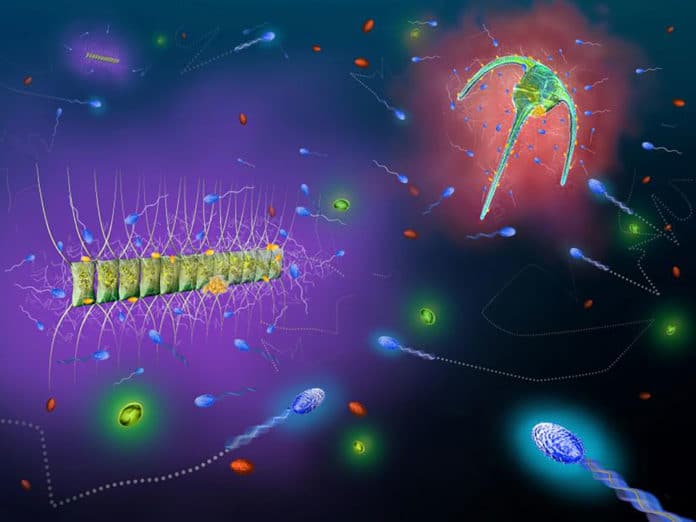The capacity of planktonic marine microorganisms to actively seek out and exploit microscale chemical hotspots has been widely theorized to affect ocean-basin scale biogeochemistry. However, it has never been examined comprehensively in situ among natural microbial communities.
For the first time, new research by scientists from the University of Technology Sydney (UTS) in collaboration with ETH Zurich and the University of Queensland has shown the swimming behavior of microbes in the natural environment. This research provides a unique view of how bacteria travel and explore their small environment.
Using a technology called microfluidics, scientists designed a specialized “bacteria trap” to measure the feeding preferences of bacteria in coastal waters near Sydney. Through this approach, scientists were able to show that the bacteria in the ocean use similar behaviors to many foraging animals, swimming through their environment while hunting and selecting their preferred “food.”
Scientists used purpose-designed microchips to gain a ‘bacteria-eye view’ of the ocean. They found that microbes in the natural environment use sophisticated behaviors to detect and move toward foods they like.
Professor Justin Seymour, a senior author of the study, said, “The work demonstrated how processes occurring over very small distances in the ocean can have large-scale impacts.”
“When we think about how small a bacterium is, it is easy to dismiss the consequences of its behavior. However, because marine bacteria are so numerous and diverse, the way they find, consume, and recycle chemicals in seawater can profoundly influence processes that control the global climate and the productivity of the marine food web.”
“This work has provided us with a unique perspective of the way bacteria navigate and explore their microscopic habitat.”
“Everybody’s seen pictures of schools of fish being targeted by feeding sharks. Here we are looking at a similar process from a microbial perspective, where bacteria are swimming into a patch of chemicals in a feeding frenzy.”
Journal Reference:
- Raina, JB., Lambert, B.S., Parks, D.H., et al. Chemotaxis shapes the microscale organization of the ocean’s microbiome. Nature (2022). DOI: 10.1038/s41586-022-04614-3
